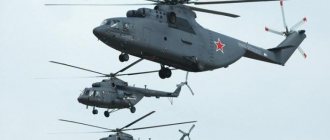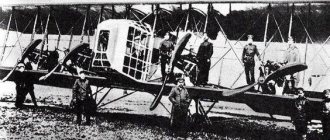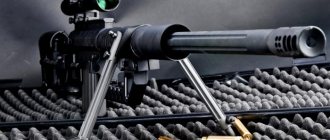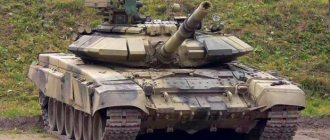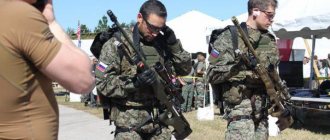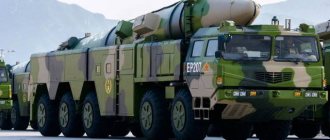Throughout its history, humanity has modernized its methods of warfare. This has led to the fact that in the 21st century there are military technologies that, due to their power, pose a fairly serious threat to the entire world. But, as we understand, such a level of development of the combat sector did not always exist. Some types of troops in certain states have a long and eventful history of formation and development. In most cases, these are the air force.
Today, countries such as the Russian Federation and the United States of America can boast of powerful aviation. For several years in a row, these states have been secretly competing in terms of better military equipment and power. In such a question, the Air Force is very often compared, because it is this branch of the military that is responsible for a large number of tasks and functions in the modern world. But in order to conduct a comparative analysis of Russian and US aviation, it is necessary to consider these military sectors separately. This will highlight their strengths and weaknesses, as well as answer the question of which country has supremacy in the air today.
What is aviation?
For a long time, the armed forces of many states consisted of artillery, infantry and cavalry. At the same time, some types of troops had a fairly high level of development. But the advent of airplanes completely changed the idea of the structure of the armed forces. Already in the First World War, aviation was used as one of the methods to defeat the physical strength of the enemy. As technological evolution progressed, this military sector developed. By the end of the 21st century, aviation had become the main element of the armed forces of any state. At the same time, the technical equipment of this type of troops has become much more powerful and deadly.
Types of aviation
The technical development of military equipment, which began at the end of the 20th century and continues to this day, has largely affected the air forces of all states. A large number of aviation technical equipment makes it possible to distinguish its individual types, namely:
1. Strategic aviation - used in most cases for reconnaissance and special operations.
2. Frontline – these are short-range forces. They are used, as a rule, to defeat the main enemy forces during military operations.
3. Transportation of equipment, personnel, provisions and other objects is the responsibility of military transport aviation.
4. An important role is played by air ambulances, through which the wounded are delivered to places of medical care.
Aviation of Russia and the USA, a comparison of which will be presented in this article, is endowed with the presented elements of the mentioned type of troops. However, in each of these states it has its own specific characteristics. It is on their basis that one can compare the Russian and US Air Forces, which has been happening very often lately. After all, these countries are the most powerful militarily. For a detailed comparison, US and Russian aviation must be analyzed separately. Because the types of troops of these powers have their own characteristics.
Russian Federation Air Force
Aviation of the Russian Federation is a well-equipped branch of the military, which is part of the general Armed Forces. Until 2015, it underwent numerous structural reorganizations. The result was the creation of the Aerospace Forces, which included aviation and air defense troops. The represented part of the army has a fairly rich structure. During the formation of independent Russia, aviation was not a new thing.
The air force existed even in imperial times. They were formed in 1910. All aviation at that time was divided into separate detachments. During the existence of the USSR, the Air Force reached the peak of its power.
The new Soviet aviation's baptism of fire took place in Spain during the civil war. The collapse of the Soviet Union marked the beginning of a new era. Russian aviation has become a priority area of government funding, which, of course, affected the technical equipment of this type of troops.
McDonnell Douglas F-15 Eagle
Country: USA, Speed: 2655 km/h
The next fastest fighter in the world 2021 belongs to the Americans, but it lags behind our domestic ones in terms of performance. It belongs to the 4th generation, and made its first flight in July 1972. It entered service with the army in 1976 and at the moment it is known that it will not leave its location until 2025. In addition to the local air force, it is also operated in Japan, Israel and Saudi Arabia. Over the entire period, 1.5 thousand units were produced. It is quite natural that such aircraft have repeatedly gone through stages of modernization, becoming even better. Unlike the previous 10 fastest fighters in the world, this one is designed for 1 person in the crew.
- Length: 19.43 m
- Wingspan: 13.05 m
- Speed: 2655 km/h
- Takeoff weight: 30.84 tons
- Ceiling: 20 km
Tasks and structure of the Russian Air Force
Aviation in Russia and the USA, a comparison of which will be presented below, has its own structures and functional tasks. In this case, the Russian Air Force implements the following areas of activity of the armed forces, namely:
1. Repel air aggression.
2. Protecting the state from air attacks.
3. Air support for infantry.
4. Defeat enemy personnel and other objects.
5. Protection of the most important internal infrastructure of the state.
As for the structure of Russian aviation, it consists of the previously presented elements that are inherent in the systems of many states with classical air forces.
General information about the American Air Force
It should be taken into account that today the Air Force of the United States of America is the most numerous, judging by the number of people and aircraft involved. As a separate branch of the military, the Air Force began its existence in 1947. Until this moment they were part of the US Army. Essentially, the Air Force is aviation, because in America these concepts are related. Air defense belongs largely to the army. Aviation has proven itself well throughout its existence as one of the most combat-ready branches of the military.
Eurofighter Typhoon
Country: Europe, Speed: 2450 km/h
The European aircraft manufacturing consortium, which includes Germany, Spain, England and Italy, created the fastest fighter in the world 2021 and it is still included in the ranking of the best fighters . Compared to its predecessors, it entered production not so long ago. The first flight was made in 1994, and the aircraft entered service in 2003. Today it is used in the ranks of large armies. The design is made using the latest technologies and many have already called it world achievements in the category of aircraft structure. The speed of the fastest fighter reaches Mach 2.3. The main gun was the 27 mm Mauser VK-27. The maximum combat load can reach 7500 kg. The main ones used are American AIM air-to-air missiles.
- Length: 15.96 m
- Wingspan: 10.96 m
- Speed: 2450 km/h
- Takeoff weight: 23.5 tons
- Ceiling: 19.81 km
US aviation structure
Considering the large number of equipment and physical forces involved in aviation activities, this branch of the military has a fairly extensive structure. Today it includes, in addition to the Ministry of the Air Force, 11 more commands. During its existence, United States aviation performed excellently in the following campaigns, namely:
- in an operation to transport street children from Vietnam;
- delivery of humanitarian aid to the CIS;
- delivery of humanitarian aid to countries affected by the 2004 tsunami;
- delivery of Somali humanitarian aid.
However, even taking into account the presented features, US and Russian aviation can be compared solely on the basis of technical equipment, which is responsible for combat power.
Superiority in numbers
The number of military equipment is one of the criteria on the basis of which Russian and US aviation is analyzed. A comparison of the air forces of these countries showed that America has been the dominant state in the skies for several years in a row. The number of US aircraft, according to the summary for 2015, is about 2,700 units of military equipment. At the same time, Russian aviation lags very far behind in this regard. The gap is calculated not in hundreds, but in thousands of pieces of equipment. Thus, in a real war, the US Air Force can cause a lot of trouble for Russia. In simple terms, American pilots will be “overwhelmed by numbers.”
Today, there are 1,400 aircraft in the Russian Federation, which puts the state in third place after the United States in the world aviation ranking. Moreover, such a gap in numbers was almost always observed. For example, Russian and US aviation in 2013 were also compared. The numbers indicated a two-fold advantage for the Americans.
First round: selection of specialists
France: Dassault-Rafale
Twin-engine light multi-role fighter, the main hope of the French in air combat. Having taken wing in 2001, within three years it began to enter service with the French military, displacing the previous development, the Dassault-Mirage 2000.
This aircraft cannot seriously boast and stand out from the ranks of its competitors. The thrust-to-weight ratio is not the greatest; there is no controlled thrust vector. There is an onboard radar station with an active phased array, but who would be surprised by this now? The only thing that compares favorably is the combat load, which amounts to a respectable 9,500 kilograms, which is more than not only its European, but also its American “colleagues.”
"Dassault Rafal"
The creators also actively advertise a large amount of carbon fiber (carbon fiber, in our opinion, backyard) in the aircraft design. However, boasting about this is somehow weak. I would like to talk about the aircraft carrier version that distinguishes it favorably, but even here there was a mistake. It turned out that fighter engines require maintenance every 150 hours of flight. Moreover, such work cannot be carried out in the conditions of an aircraft carrier - you need to return to the port. When this became clear, the sailors shouted loudly and gesticulated, the planes were rejected, and they decided to deal with the engines later.
Germany, Italy, Spain and Great Britain: Eurofighter Typhoon
Perhaps the main hope of Europe in the nineties, the Eurofighter Typhoon exploded into the sky in 1994, and until the start of operation in 2003 they talked about it with aspiration and tenderness. All the trends of recent years are here: even a decrease in radio visibility in order to play “almost stealth”. “Almost” - because there were no internal compartments for weapons; everything is attached from the outside, the old-fashioned way.
Fuel is poured not only into the fuselage, but also into the wings.
The fuel is located in the wing caissons. Partly thanks to this, it was possible to provide a combat radius of 1390 kilometers; however, with the same three drop tanks as the Rafal.
Eurofighter Typhoon (photo: David Ellins)
There is no deflectable thrust vector here, but in the future - if customers give money for development - it will be possible to get one. The engines are modular, as is now fashionable - replacement time is only about 45 minutes.
Sweden: SAAB JAS-39 "Gripen"
The Swedish sky opened its arms to the first “griffin” back in 1988. The operation of these aircraft began almost ten years later, in 1997. The Swedish military, drawing up the technical specifications for Saab engineers, put crosses in all possible columns: low radio signature, the ability to use the fighter as a reconnaissance and interceptor, short take-off, operation from unprepared airfields, cheapness and simplicity.
The engineers did not disappoint. Even though there is only one engine, the dimensions are small, and the combat load is almost half that of the Rafale, but the rest of the points have been fulfilled - receive it and sign for it.
SAAB JAS-39 "Gripen" (photo: Tuomo Salonen)
The plane is cheap, simple and boasts a cockpit that is surprisingly similar to the dashboard of a SAAB 9000 car (almost the same company). The Swede doesn’t show any special miracles, but he doesn’t get lost either. Separately, it is worth noting the good thrust-to-weight ratio.
Ratings:
Dassault Rafale - 4.5
Eurofighter Typhoon - 4.5
JAS 39 Gripen - 3.5
Aviation efficiency
Aviation of the Russian Federation and the United States, a comparison of the numbers of which showed the advantage of the latter criterion, should also be analyzed from the point of view of efficiency. The bulky arsenal of US military equipment would not be such a formidable weapon if America did not have a large number of air bases around the world. That is, the level of operational response of American aviation is quite high due to the extensive network of military points. This positive moment is determined by America's participation in the NATO bloc. Oddly enough, the Russian Federation is also not lagging behind in this regard. At the same time, the lack of air bases around the world is compensated by the presence of a large territory of the state itself. In fact, Russia is the largest country in the world by area, which has a positive effect on its military sector.
“You CANNOT COMPARE A MERCEDES WITH A PHONE BOOTH”
The premiere of the model of the newest Russian single-engine fighter S-75 (aka “Checkmate” or “Checkmate”) has already made a lot of noise in the world.
The opinions of aviation experts and ordinary people are very different: from admiration to poisonous criticism. There is also something moderate: the car seems to be okay, with great ambitions and cool bells and whistles, but we still have to see what it will turn out like in the end.
From behind the neighboring fence, Ukrainian envious people angrily barked: “Russian designers brazenly smeared the design of a new car from the American F-35 fighter! They copied it from a bad student!”
The Defense Express magazine, published in the United States, happily replicated this opinion of “experts” from Ukraine (!), who are clearly tormented by a toad of envy (besides, they don’t produce their own combat aircraft at all!).
Former designer of the Sukhoi Design Bureau, Candidate of Technical Sciences Vadim Lukashevich sharply punched the Kiev envious people and liars on the nose:
“Ukraine once again wants to say that everything is bad in Russia. This is not a copy of the F-35, it is a fundamentally different machine. They are even made according to different aerodynamic designs. The F-35 is a classic with a horizontal stabilizer, but this aircraft does not have a horizontal stabilizer. It has no stabilizer at all! It has plumage in the form of two differentially tiltable planes, which perform the functions of a vertical tail, that is, two keels and, accordingly, a horizontal stabilizer. Basically, they have nothing else in common. But to compare on this basis that this “Checkmate” is licked with the F-35 is like comparing a Mercedes to a telephone booth.
American F-35 fighter
Photo: Shutterstock
Strategic aviation of Russia and the USA: comparison
One of the most significant advantages of the US Air Force is the strategic sector, which is represented by fighters. Today, vehicles of this type are the basis of the combat power of US aviation. Their main feature is that almost all American strategic equipment is designed to carry out ultra-precise strikes against targets on the ground. That is, in conditions of special operations, US fighters are indispensable.
Russian aviation cannot boast of such a scale. Such capabilities are assigned mainly to front-line bombers, for example: Su-24, Su-34, Su-25. Thus, the strategic aviation of Russia and the United States, which they are trying to compare everywhere, shows America’s advantage in this case. However, it is worth noting that Russia began an active program to modernize and rejuvenate its Air Force back in 2010. As a result, new strategic bombers of the PAK-DA type are expected to arrive in the Russian Federation by 2025. At the same time, the United States of America extended the operation of its military equipment until 2030. This indicates the gradual aging of the US aviation sector.
Thus, the strategic aviation of Russia and the United States is characterized by the presence of a large amount of equipment and the gradual renewal of the Russian Air Force, which will certainly give us an advantage over the Americans in a few years.
An attempt by the American Air Force to test Russia's defenses in the Black Sea region resulted in an extremely curious reaction from Moscow. This was reported by Sohu. PolitRussia presents an exclusive retelling of the publication.
Recently, NATO aircraft have significantly increased their activity in the Russian airspace; incidents with Western military vehicles approaching the borders of the Russian Federation occur with enviable regularity. Such incidents force Moscow to scramble its fighter jets to prevent potentially dangerous situations.
“Russia, which is considered a 'fighting nation' in China, is quite difficult to anger. However, after countless sorties of NATO aircraft to the borders of the Russian Federation, the patience of the Russians is beginning to burst,” the authors of Sohu note.
If previously only NATO reconnaissance planes appeared in the border regions of Russia, recently fighter jets and even strategic bombers have been frequenting them. The latter simulate attacks on Russian regions such as Crimea and Kaliningrad. It can be stated that the military activity of the West has reached extreme impudence - such maneuvers can no longer be called simply reconnaissance. The Russian Federation, of course, could not leave this without appropriate punishment.
wikipedia.org / US Air Force photo by Tech. Sgt. Jacob N. Bailey/Public Domain
A very significant episode occurred some time ago over the Black Sea, where the US military simultaneously sent three B-52 strategic bombers. The planes passed through Ukrainian airspace and headed for Russian airspace. Four Russian Aerospace Forces fighters flew towards them and quickly became close to the provocateurs. What followed was an extremely dramatic confrontation between American and Russian pilots.
“The maneuvers of Russian aircraft forced US bombers to change their course. Only after the Americans were driven back from the Russian borders did the combat units of the Russian Aerospace Forces return to their bases,” stated Chinese experts.
It should be noted that at that moment one of the American bombers approached the Crimean Peninsula and was only 25 km from Russian airspace. As a result, he was turned around quite harshly and sent home. Thus, the United States and its NATO partners were warned against repeating such maneuvers.
Earlier, PolitRussia wrote that NATO would not risk attacking a Russian region with the secret status of A2AD.
The article was first published on 01/22/2021
Gap in quality today
Aviation in Russia and the United States, a comparison of which often speaks of the superiority of the latter, shows the backwardness of domestic technology in terms of the quality and novelty of aircraft. Even despite the fact of the “rejuvenation” program of the Air Force, which began in 2010, as was already mentioned earlier, American aircraft are several times superior to Russian aircraft at the technical level. This is an extremely negative factor, because it jeopardizes the outcome of any military operations with America for our country. The problem is that today in Russia all aviation is represented by 4th generation aircraft. The United States achieved this technological progress back in the 80s of the last century.
Thus, the aviation of Russia and the United States in comparison shows the superiority of the quality of American aircraft. In addition, the Russian Federation has long been developing technical means that should become an analogue of the famous American B-2 (Stealth). At the same time, in the USA, based on the already presented aircraft, new technology is being developed.
MiG-25 fighter
Country: Russia, Speed: 3000 km/h
One of the recognizable and undoubtedly the fastest fighter in Russia and not only, but throughout the world. It is no longer in service in the Russian Army, but remains in other state CIS countries, Iraq, and Algeria. The device made its first flight in 1964, and already in 1970 it went into operation. It was at the controls of this aircraft that the record was set in the 77th for the highest flight altitude of 37.65 kilometers. Throughout its history, 38 world-class records have been set there. The speed of the fastest fighter can reach Mach 2.83. To this day it is used in Algeria and Syria. Many other combat aircraft were also created on its basis; one might say the MiG-25 fighter became the basis.
- Length: 21.55 m
- Wingspan: 13.38 m
- Speed: 3000 km/h
- Takeoff weight: 41.2 tons
- Ceiling: 23 km
"Reserve" in case of war
It is worth noting the fact that all started technical developments - both in the USA and in Russia - require huge sums of money. Their absence significantly slows down the process of fleet renewal. Therefore, in the event of full-scale hostilities, the main confrontation will take place using 4th generation aircraft on both sides of the barricades.
The Americans will use F-15, F-16, F-18 class fighters, and the Russian Federation will use Su-2″5 attack aircraft and MiG-28, MiG-35 fighters, etc. When Russian and US aviation 2014 was compared, the analysis showed the same characteristics of the aircraft fleet. Therefore, as we understand, no significant changes are expected in the near future. All shifts are for a minimum of 5 years.
Expert: comparisons of fifth-generation fighters in the media are always fake
"Putin is harassing Biden with fighter jet threats," the Daily Express reported. Russian media circulated this information. At the same time, the emphasis was not even on the material itself, but on the reader’s comments on the text published in the Daily Express.
Why the Russian Army is not decommissioning the 1979 SS-19 Stiletto missiles
Russia has extended the combat duty of the UR-100N UTTH, or SS-19 Stiletto, missiles for another year...
19 October 10:48
Let's quote it in full: “We need to leave NATO! I don’t understand why we are in partnership with the United States, defending the Baltic states, especially since they in the EU do nothing but scold us! Does it even make sense to protect Germany and Volkswagen from the Russians?” Author - Glyn 342.
It is probably wrong to correlate one single comment with the content of the Daily Express text and the editorial policy of this newspaper, much less present it as the opinion of “the authors and experts of the British publication.”
Now about the material in the Daily Express. There is nothing revolutionary or exclusive in this text. Texts of this kind - with comparisons of fifth-generation fighters from different countries - periodically appear on the pages of various foreign newspapers and magazines. Domestic authors also sometimes get carried away with such comparisons, but this phenomenon in our country has not become as widespread as in the USA.
Comparing the Su-57 and F-35 in the absence of their actual characteristics is, to say the least, incorrect.
Today we don’t know in detail not only the characteristics of the domestic fifth-generation fighter Su-57, we don’t even really know the tactical and technical characteristics of the F-35, although the level of openness associated with foreign models of military equipment is traditionally significantly higher than ours.
For example, in modern and future aircraft there is no point in comparing speed. By and large, no one is interested in it, just like flight altitude. Today, fighter planes no longer chase each other, as in the air battles of the First and Second World Wars.
As for maneuverability, it is, of course, a more difficult thing to analyze and compare. In certain circumstances, the maneuverability of a fighter matters, although not nearly as decisive as in previous times. Currently, maneuverability is not a critical characteristic of a modern fifth-generation aircraft.
The key parameter for a modern aircraft is the combination of payload and flight range. Ultimately, this results in a combat radius within which effective air combat can be conducted.
And it is precisely this combination - combat load and flight range for fifth-generation aircraft - that is nowhere to be found in open sources. One of the key parameters determining the combat effectiveness of fifth-generation fighters is the tactical and technical characteristics of the onboard radar. For example, what is important is not just its maximum operating range, but the detection range of certain targets with very specific effective reflective surfaces.
None of the specialists who own this information will ever, under any circumstances, mention the true characteristics of the on-board radio-electronic equipment.
“The Americans will not leave the East”
Head of the State Duma Committee on International Affairs, deputy Leonid Slutsky in his first interview...
16 October 12:40
As for another characteristic of the on-board radar of a modern fighter, and one of the most important characteristics - its immunity to interference in difficult conditions of the radio-electronic environment - this, too, is currently not described anywhere at all.
There are no real numbers. Just as there is no information about what materials and in what combination are used to create the antenna fabric. As for the radar signature of fifth-generation fighters - another key parameter of aircraft of this type - no one really knows that either.
A few words about the capabilities of weapons for fifth-generation combat vehicles. And on these parameters, it should be noted, today there is no accurate information. No one really knows the real capabilities of promising long-range air-to-air missiles. For missiles with an infrared homing head, some tactical and technical characteristics can still be assumed, but with radar guidance systems the situation is much more complicated.
Finally, there is one more, but very important fact. Currently, the US Air Force and its allies (F-35 cooperation partners) are equipped with about 700 F-35 fighters. By Soviet standards, these are two air armies.
In turn, in the Russian Aerospace Forces there is not yet a fighter aviation regiment armed with Su-57s, there is not even a squadron, there is not even a flight. And this must also be kept in mind when comparing the combat and operational capabilities of the parties.
The author's opinion may not coincide with the position of the editors.
Author biography:
Mikhail Mikhailovich Khodarenok is a military columnist for Gazeta.Ru, a retired colonel. Graduated from the Minsk Higher Engineering Anti-Aircraft Missile School (1976), the Military Command Academy of Air Defense (1986). Commander of the S-75 anti-aircraft missile division (1980–1983). Deputy commander of the anti-aircraft missile regiment (1986–1988). Senior officer of the Main Staff of the Air Defense Forces (1988–1992). Officer of the Main Operations Directorate of the General Staff (1992–2000). Graduate of the Military Academy of the General Staff of the Russian Armed Forces (1998). Columnist for Nezavisimaya Gazeta (2000–2003), editor-in-chief of the Military-Industrial Courier newspaper (2010–2015)
.
